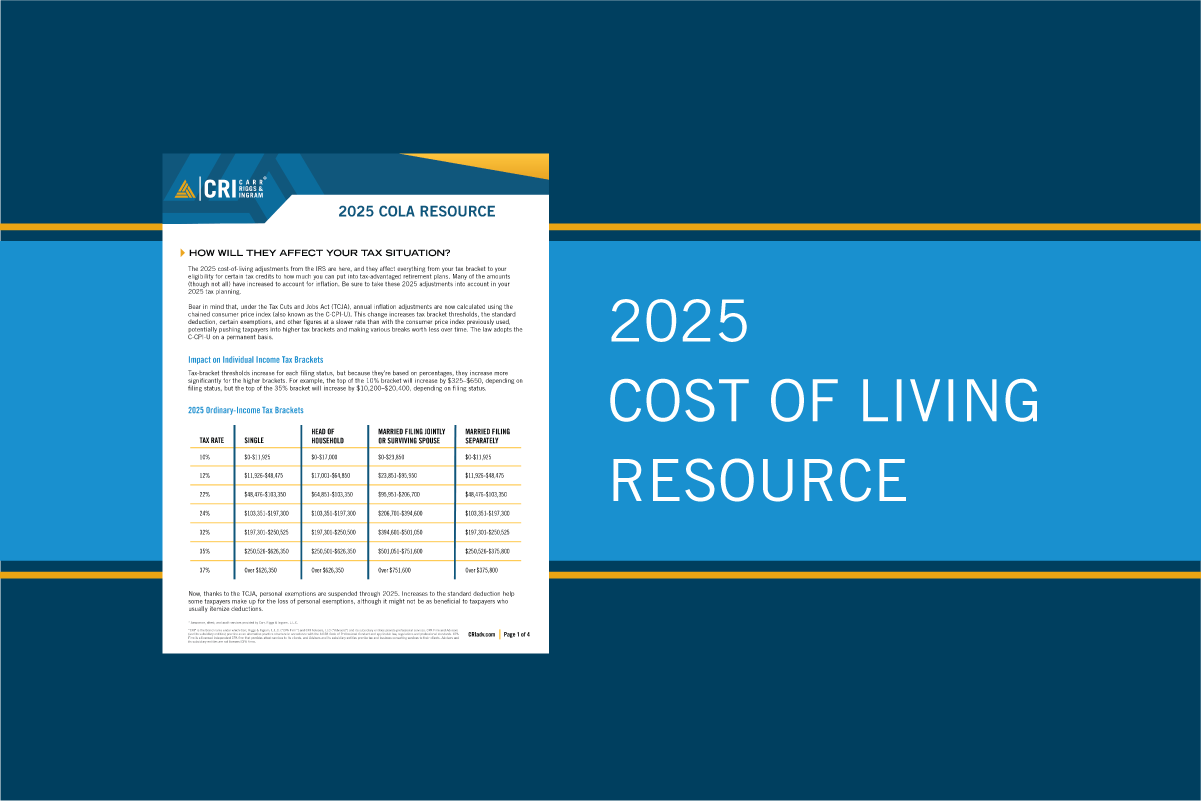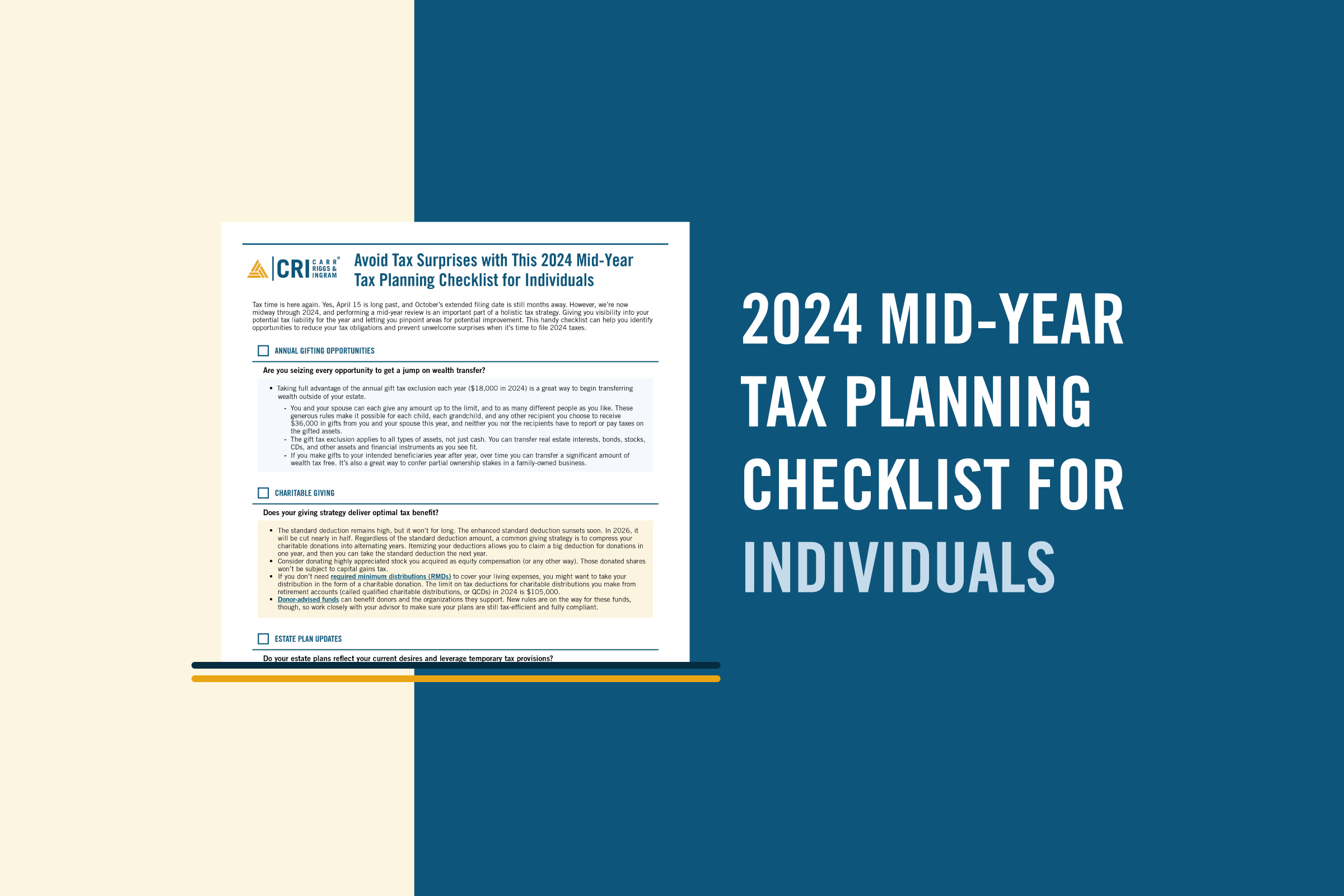Year-End Actions for Businesses Facing the 2025 Tax Cliff
- Contributor
- Kris Hoffman
Nov 13, 2024
As the 2025 “Tax Cliff” approaches, year-end planning in 2024 presents a valuable opportunity for businesses to take proactive steps to optimize tax benefits and prepare for potential impending changes to tax laws. The expiration of certain provisions from the Tax Cuts and Jobs Act (TCJA) and other anticipated changes mean that businesses need to evaluate their financial and operational strategies carefully.
Immediate Year-End Actions
To maximize current tax benefits, businesses should focus on strategies that leverage expiring provisions to lower 2024 tax liabilities. Discuss these actionable steps with your tax professional to make the most of year-end opportunities for your business.
- Capitalize on Expiring Deductions and Credits
- Qualified Business Income (QBI) Deduction: Maximizing the QBI deduction for pass-through entities can significantly reduce taxable income. Review income levels and explore strategies such as accelerating or deferring expenses to align with the QBI eligibility thresholds, helping to preserve this valuable deduction before it potentially changes.
- Bonus Depreciation: For businesses planning capital investments in machinery, technology, or equipment, consider purchasing and placing these assets into service by year-end to benefit from the 60% bonus depreciation rate. For companies with long-term equipment needs, accelerating planned investments can yield immediate tax benefits while the rate remains favorable.
- R&E Expenditures: If your business has ongoing research and development projects, consider whether these expenditures qualify for a federal or state research credit. With R&E costs now subject to amortization, receiving a tax credit (if eligible) can allow for some immediate deduction benefits.
2. Maximize Employee-Related Tax Benefits
- Work Opportunity Tax Credit (WOTC): If your business is hiring, consider prioritizing candidates from targeted WOTC categories, such as veterans and long-term unemployed individuals. Hiring from these groups can qualify your business for substantial tax credits while also supporting valuable social initiatives.
- Paid Family and Medical Leave Credit: Structuring benefits packages to include paid family and medical leave before the end of 2024 may allow your business to claim a tax credit on a portion of wages paid during leave. Review existing leave policies to ensure they qualify for this credit, and consider extending benefits where necessary to maximize potential savings.
3. Optimize Cash Flow through Tax-Related Timing Adjustments
- Income and Expense Timing: If your business expects tax rates to increase in the future, consider accelerating income recognition into the current year while deferring deductible expenses to future periods. Alternatively, if you anticipate lower rates in 2025, deferring income and accelerating deductible expenses may be beneficial.
- Materials and Supplies Purchases: Businesses may benefit from evaluating how they account for incidental materials and supplies. This is especially advantageous if de minimis safe harbor rules, which allow small-dollar expenditures to be expensed rather than capitalized, apply to these purchases.
4. Address Tax Bracket and Deduction Changes for Business Owners
- Personal Income Planning for Business Owners: Business owners filing as individuals should review personal and business income levels carefully. With tax brackets and deductions set to revert to pre-TCJA structures after 2025, owners may evaluate income-shifting strategies, retirement plans, and various deductions for 2024 and beyond. Adjusting personal income strategies can help mitigate tax increases in the coming years.
Taking these proactive steps before year-end can help you maximize current tax benefits and set your business up for a stronger financial position in 2024. Acting now allows you to capture expiring opportunities and make the most of available deductions before they potentially change.
Longer-Term Considerations
Businesses should also focus on long-term tax strategies to manage potential changes effectively. While immediate actions are essential for 2024, planning beyond this year can provide a smoother transition into the anticipated tax environment. Here are some additional considerations for longer-term planning:
- Entity Structure Review: Given potential changes to pass-through taxation and corporate rates, consider whether your current entity structure aligns with your long-term tax goals. A restructuring now, in consultation with your tax advisor, could offer advantages in the new tax landscape.
- Succession and Estate Planning: With potential changes to estate tax exemptions on the horizon, business owners should revisit their succession and estate planning strategies. Taking steps now to transfer wealth or implement family trusts can help secure current tax benefits and avoid higher taxes later.
- International Considerations: For corporations with significant overseas operations, international tax rules are daunting. With the looming changes to some of the international tax rates if the TCJA expires, the companies will need to evaluate the impact to their worldwide tax rate.
These longer-term strategies provide your business with a strong foundation to navigate the evolving tax landscape and ensure readiness for future changes.
Prepare for the Next Steps
With the 2025 Tax Cliff drawing near, year-end planning in 2024 is more than just a routine review—it’s an essential opportunity to take action. The correct tax strategies can help reduce your 2024 tax liabilities and position your business for success in a changing tax landscape.
From leveraging expiring provisions to making strategic cash flow adjustments, these immediate actions and long-term considerations can make a substantial difference in your financial outlook.
If you have questions or want guidance tailored to your specific circumstances, don’t hesitate to contact your CRI advisor. Our team is here to help guide you through these changes and make the most of year-end planning for a stronger, tax-smart future.




























































































































































































































































































































































































































































































